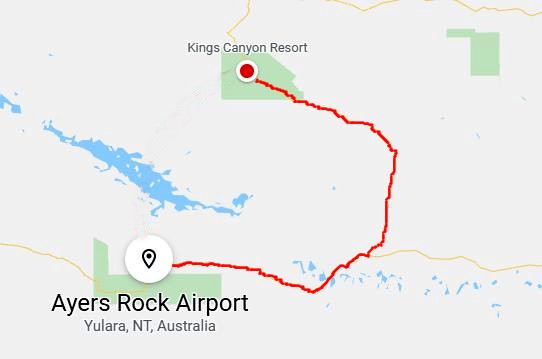Kings Canyon
Kings Canyon Resort has a pub and a restaurant. It was still freezing and after comparing meal prices - not much different - we opted for the restaurant, which was also a shorter walk.
The next morning, we checked out the helicopter tours and were able to get a flight almost immediately. This proved to be a highlight of the trip and had the added advantage of identifying a walk into the canyon to do and another to avoid.
Kings Canyon helicopter tour
Then came the slightly harder part - exploring some of it on foot. We took the low road.
Kings Canyon walking track
At one time this was cattle country. Wild cattle were herded into the canyon to be rounded into a mob that could then be taken to market. The remains of the old yards can still be seen.
The remains of the old cattle business
The following day all that remained was the 320 kilometre drive back to Ayres Rock Airport this time on good roads.
Yet it was clear on the trusty TomTom that the distance as the crow flies is only 130 kilometres.

The huge diversion is needed to avoid Lake Amadeus, the largest salt lake in the Northern Territory, and the adjacent Lake Neale.
In 1872 the lake's expanse proved a barrier to the explorer Ernest Giles, who could see both the as yet undiscovered Uluru and Kata Tjuta but could not reach them because the dry lake bed was unable to support the weight of his horses.
And so, it was back to Sydney where it was both cold and raining.

